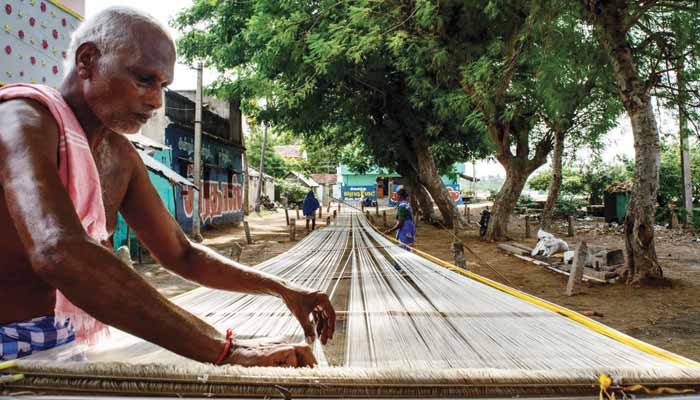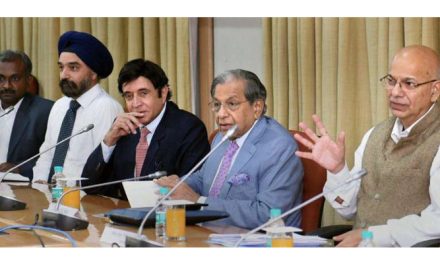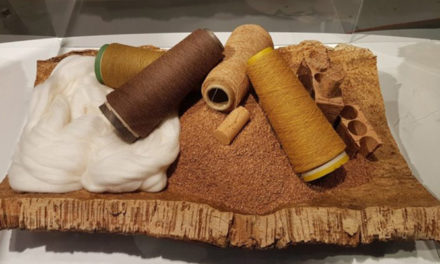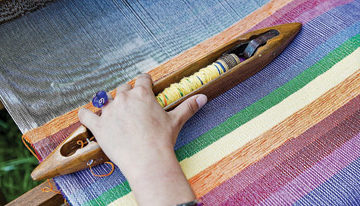Poor wages, uncertain employment prospects and stiff competition from power looms have forced many cotton handloom weavers in and around Musiri to move to daily-wage labour. Musiri, home of the popular handloom organic cotton veshtis and cotton saris, called the ‘Tiruchi type,’ has seen dwindling number of weavers in the past ten years as they were unable to make enough money for survival. “When I had started my career at the age of 12, our industry was blooming. Then, it was a flourishing means of livelihood. Now, we are unable to make ends meet and have chosen to make a living of unskilled labour that pays us regularly,” says M Satish Kumar, who quit a few years ago.
The men are now employed as waiters, security guards, construction workers and drivers while some women go as house helps and cooks. For the remaining handloom weavers and the few power loom weavers, the orders mostly come from Salem. “We get assured orders and they supply the raw materials to us. We then weave the veshtis or saris,” says M Gomathi, who owns a power loom in Saliyar street, Musiri.
“The wholesalers in Salem reach our village and distribute the raw materials. They collect the finished goods within the stipulated time. I learned this skill from my father but I don’t think we can sustain it until our son grows up to learn it,” says Gomathi. “We don’t know any other way of making a living apart from running the loom and agriculture. We got a loan and paid for the power loom but have to spend almost all that we earn on electricity bills which is about Rs. 1,500 a month,” she says.
The power loom can weave about six sarees a day, but its procured only for Rs. 65 a piece while a handloom saree is taken for Rs. 350. “On a handloom, you can make only one saree a day. The amount you would make per saree is the same on both machines then,” Gomathi said.
The government introduced several subsidies and initiatives to encourage weaving but it was not feasible, says Gomathi. “There is demand for sarees but we need additional space to accommodate the looms which we can’t afford it. There are subsidised loans too, but there are not many takers as they have all migrated now”.









